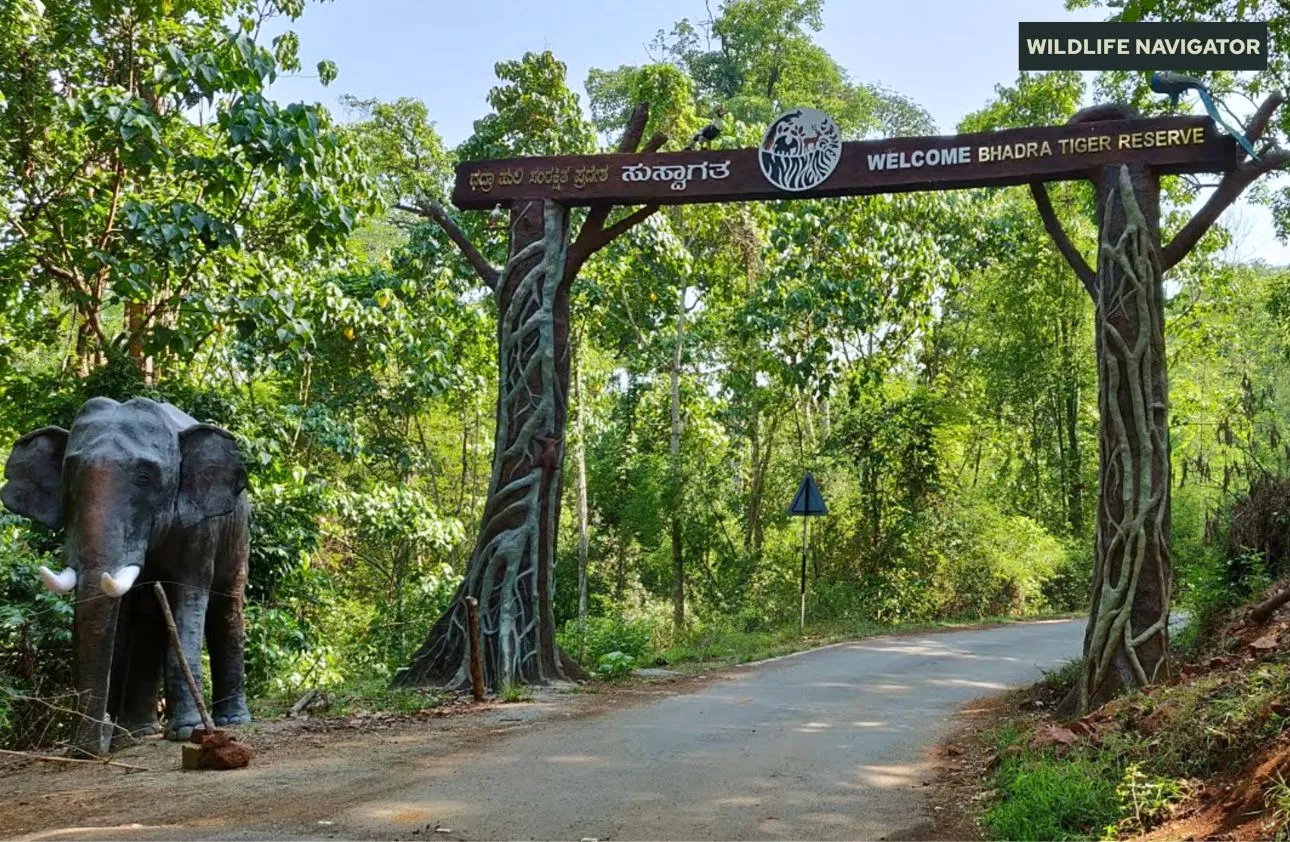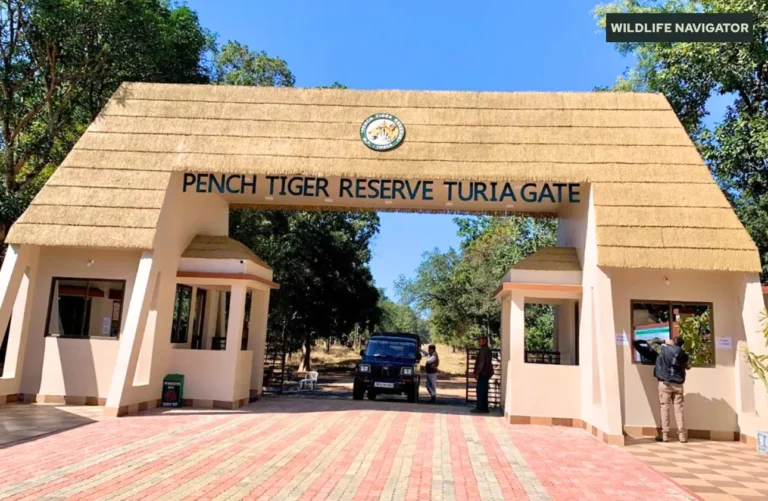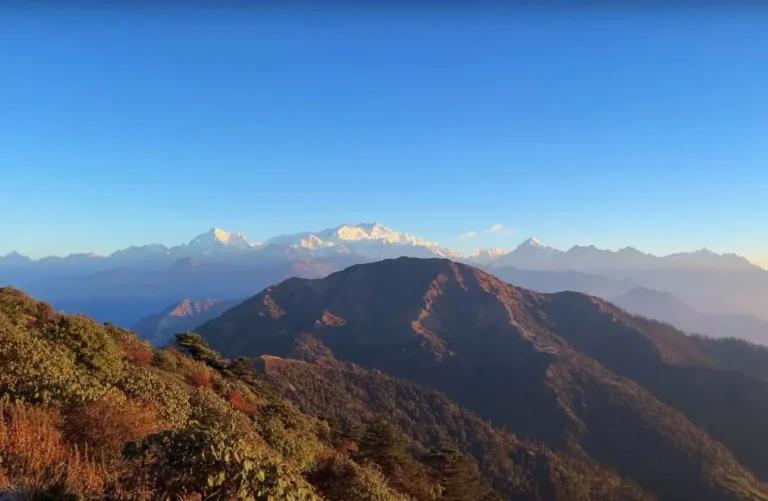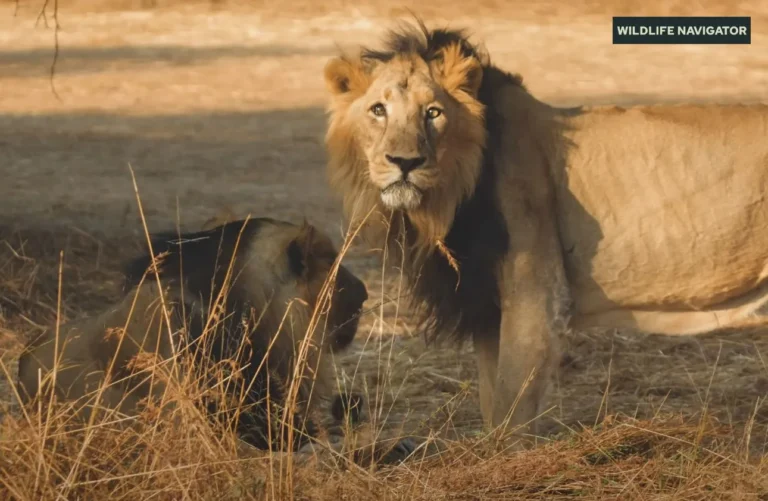Bhadra Tiger Reserve: Complete Travel Guide, Safari, Flora & Fauna, Entry Fees

Bhadra Tiger Reserve is one of Karnataka’s most captivating wildlife destinations. Sprawling across the districts of Chikkamagaluru and Shivamogga, this reserve is a paradise for nature lovers, adventure seekers, and wildlife enthusiasts. Officially declared a Project Tiger Reserve in 1998, Bhadra plays a crucial role in safeguarding India’s most iconic predator – the Bengal tiger – while also preserving an incredibly rich variety of flora and fauna.
What makes Bhadra stand out among other reserves is its diverse ecosystem. The terrain here is a beautiful mix of dense forests, rolling hills, open grasslands, and serene river valleys. The mighty Bhadra River, from which the reserve takes its name, flows through the region and nourishes its biodiversity. This river also creates opportunities for unique boat safaris, where travellers can spot wildlife on the riverbanks while cruising through calm waters – a rare experience compared to other tiger reserves in India.
For wildlife enthusiasts, the reserve offers much more than tiger sightings. Bhadra is home to elephants, leopards, wild dogs (dhole), sloth bears, gaur, and a dazzling array of birdlife. With over 250 bird species recorded, it is a true haven for birdwatchers. From the majestic Malabar pied hornbill to vibrant parakeets and kingfishers, every safari is filled with delightful surprises.
Apart from its biodiversity, Bhadra Tiger Reserve is also known for its serene and less-crowded atmosphere. Unlike some of the more commercialised parks in India, Bhadra retains a sense of wilderness and tranquillity, making it ideal for travellers who want to escape into the lap of nature. The reserve also supports eco-tourism initiatives, with local communities actively participating in guiding, hospitality, and conservation efforts.
Whether you are planning an adventurous jeep safari, a peaceful river ride, or simply a retreat into the wild, Bhadra Tiger Reserve offers an unforgettable experience. Its perfect blend of scenic landscapes, abundant wildlife, and conservation significance makes it one of the best-kept secrets of Karnataka’s natural heritage.
History, Geography & Landscape of Bhadra Tiger Reserve
History & Significance
The story of Bhadra Tiger Reserve is deeply rooted in India’s efforts to protect its wildlife heritage. Initially established as Jagara Valley Wildlife Sanctuary in 1951, the area was later expanded and declared as Bhadra Wildlife Sanctuary in 1974. In recognition of its ecological importance and the presence of a thriving tiger population, it was officially brought under Project Tiger in 1998, earning its current status as Bhadra Tiger Reserve.
Since then, Bhadra has become a symbol of successful conservation. The reserve has seen a steady rise in its tiger population, thanks to strict protection measures, habitat management, and community participation. Beyond tigers, the sanctuary provides refuge to countless species, playing a key role in maintaining the fragile balance of the Western Ghats ecosystem, a UNESCO World Heritage Site.
Geography & Landscape
Geographically, Bhadra Tiger Reserve is a mosaic of rich habitats spread across Chikkamagaluru and Shivamogga districts of Karnataka. Covering an area of around 492 square kilometres, it encompasses a stunning variety of landscapes — from evergreen and semi-evergreen forests to moist and dry deciduous woods, interspersed with grasslands and river valleys.
The Bhadra River, from which the reserve derives its name, flows gracefully through the sanctuary, supporting both wildlife and local communities. Along its banks, lush greenery flourishes, and during boat safaris, visitors often spot animals quenching their thirst or birds fishing in its waters. The river is also linked with the Bhadra Dam and reservoir, adding to the scenic beauty of the reserve.
What makes Bhadra even more enchanting is its terrain. The reserve lies in the shadow of the Western Ghats, with rolling hills and elevations ranging from 615 to 1,875 meters above sea level. These hills not only provide breathtaking viewpoints but also create diverse microclimates that sustain different plant and animal species.
The undulating valleys, streams, and thick forest cover create an ideal habitat for large mammals like elephants and gaurs, as well as predators like tigers and leopards. The pristine landscapes also make Bhadra one of the most photogenic reserves in southern India, attracting not just wildlife enthusiasts but also trekkers and nature photographers.
Flora & Fauna of Bhadra Tiger Reserve
Flora
Bhadra Tiger Reserve is a true botanical treasure, thanks to its location in the biodiverse Western Ghats. The vegetation here ranges from dry deciduous to moist deciduous and evergreen forests, creating diverse habitats for countless species. Towering trees, bamboo thickets, and medicinal plants dominate the landscape, adding to the sanctuary’s ecological richness.
Major plant species found in Bhadra include:
- Teak (Tectona grandis) – valued for its strong timber.
- Rosewood (Dalbergia latifolia) – one of the most important hardwood species.
- Mathi (Terminalia tomentosa) – a keystone tree supporting many animals.
- Bamboo groves – critical for elephants and other herbivores.
- Medicinal plants and climbers – used by local communities for traditional healing.
- Evergreen shrubs and grasses – forming undergrowth that supports smaller wildlife.
The variation in vegetation across altitudes makes Bhadra a living laboratory for botanists and a paradise for nature lovers.
Fauna
While the lush greenery sets the stage, it is the wildlife that steals the spotlight. Bhadra is home to an impressive diversity of animals, making it one of Karnataka’s most important tiger reserves.
Mammals you can spot in Bhadra include:
- Tiger – the flagship species and star attraction.
- Leopard – often seen in hilly or rocky terrains.
- Wild dog (dhole) – highly social and skilled hunters.
- Asian Elephant – roaming in herds across the reserve.
- Gaur (Indian bison) – the largest wild cattle in the world.
- Sloth bear – usually found in forested areas.
- Sambar deer, barking deer, and spotted deer – important prey species.
Birdlife (over 250 species):
- Malabar pied hornbill – a striking bird unique to the Western Ghats.
- Grey junglefowl – a relative of the domestic chicken.
- Crested serpent eagle – often seen soaring above treetops.
- Kingfishers, parakeets, and bee-eaters – adding colour to the skies.
- Endemic Western Ghats species like the Malabar trogon.
Reptiles & Others:
- Marsh crocodiles basking near the Bhadra River.
- Monitor lizards and pythons.
- Several species of amphibians and butterflies thrive in the reserve’s moist climate.
Together, the flora and fauna of Bhadra Tiger Reserve showcase the intricate balance of life that makes the Western Ghats one of the world’s biodiversity hotspots.
Safari Experience in Bhadra Tiger Reserve
A visit to Bhadra Tiger Reserve is incomplete without experiencing its thrilling safaris. Unlike some national parks that only offer jeep rides, Bhadra stands out with its two unique safari options – jeep safaris through dense forests and boat safaris on the Bhadra River. Each gives you a completely different perspective of the reserve’s wilderness.
Jeep Safari
The jeep safari is the most popular way to explore the reserve. With open-top vehicles guided by trained naturalists, visitors are taken deep into the core areas of the forest. The rugged trails pass through teak and bamboo forests, grasslands, and riverbanks, giving you the chance to spot tigers, leopards, elephants, and herds of gaur.
Highlights of jeep safaris include:
- Close encounters with wildlife in their natural habitat.
- Birdwatching opportunities at dawn and dusk.
- Exploring different terrains, from hilly slopes to forested valleys.
- Small group sizes for a more personalised experience.
The thrill of hearing alarm calls of deer or spotting fresh pugmarks on the trail adds to the adventure. While tiger sightings depend on luck, the overall experience is guaranteed to be memorable.
Boat Safari
What truly makes Bhadra unique is the boat safari on the backwaters of the Bhadra River and reservoir. Cruising silently over the water, visitors can see elephants, gaurs, and even tigers coming down to drink along the riverbanks. Marsh crocodiles bask in the sun, while kingfishers, herons, and eagles swoop down for fish.
Why choose a boat safari?
- A peaceful alternative to the rugged jeep ride.
- Spectacular views of wildlife from the water.
- Excellent for photographers and birdwatchers.
- Perfect chance to spot aquatic and semi-aquatic animals.
Safari Timings & Duration
- Morning Safari: 6:00 AM – 9:00 AM (best for spotting predators and birds).
- Evening Safari: 3:30 PM – 6:30 PM (ideal for elephants, herbivores, and sunsets).
- Boat Safari: Usually offered at similar timings, depending on water levels.
Each safari lasts about 2–3 hours, ensuring you have ample time to explore and soak in the wilderness.
Best Time to Visit Bhadra Tiger Reserve
One of the key factors that can make or break your wildlife trip is the timing of your visit. Luckily, Bhadra Tiger Reserve can be visited almost year-round, but the experience differs depending on the season. Each time of the year brings its own charm — from lush greenery after monsoons to higher chances of spotting predators during the dry months.
Winter (October – February) – The Best Season
- Winter is considered the ideal time to visit Bhadra. The weather is cool and pleasant, with temperatures ranging between 14°C and 28°C.
- Clear skies and crisp mornings make safaris enjoyable.
- Animals are often more active during this season, and birdwatching is especially rewarding as migratory species arrive.
- A perfect time for photography, trekking, and eco-tourism stays.
Summer (March – May) – Great for Tiger Sightings
- Temperatures rise between 22°C and 36°C, but this season is excellent for wildlife enthusiasts.
- As water sources dry up, animals gather around the Bhadra River and reservoirs, increasing the chances of spotting tigers, leopards, and elephants.
- Vegetation becomes thinner, making it easier to spot wildlife in the forests.
- Safaris may feel hotter, so carrying light clothing, hats, and plenty of water is essential.
Monsoon (June – September) – Lush but Restricted
- The Western Ghats receive heavy rainfall, and Bhadra turns into a green paradise.
- The dense forests, misty valleys, and overflowing streams create a magical landscape.
- However, safaris may be limited or canceled due to slippery trails and safety concerns.
- It’s the best season for nature lovers who enjoy the beauty of rain-soaked forests, but not ideal if your main goal is spotting tigers.
Overall Recommendation
- Best Months to Visit: October to May.
- Avoid: Peak monsoon months (July–August) if you want guaranteed safaris.
How to Reach Bhadra Tiger Reserve
Bhadra Tiger Reserve is located in the heart of Karnataka, spread across Chikkamagaluru and Shivamogga districts. Its location in the Western Ghats makes it both accessible and scenic, with good connectivity by road, rail, and air. Whether you’re travelling from Bengaluru, Mysuru, or Mangaluru, reaching Bhadra is fairly convenient.
By Road
- From Bengaluru (Approx. 280 km / 6–7 hours): The most common route is via Tumakuru – Arsikere – Tarikere. Roads are well-maintained, and the drive through coffee estates and hills is quite enjoyable.
- From Mangaluru (Approx. 200 km / 5 hours): Travel via Charmadi Ghat, which offers stunning Western Ghats landscapes.
- From Mysuru (Approx. 255 km / 6 hours): Route via Hassan and Chikkamagaluru makes for a scenic drive.
- Local buses and private taxis are also available, but self-drive or cab rentals are more convenient for exploring the area.
By Rail
- The nearest railway station is Tarikere Junction (about 20 km) from the reserve.
- Other nearby stations: Birur Junction (40 km) and Shimoga (75 km).
- From these stations, taxis or local buses can be hired to reach the reserve.
By Air
- Mangaluru International Airport (200 km) is the closest airport with good connectivity to major Indian cities.
- Kempegowda International Airport, Bengaluru (300 km) is another option for domestic and international travellers.
- From either airport, you can hire a taxi or take a bus towards Chikkamagaluru/Shivamogga and proceed to Bhadra.
Local Transport & Accessibility
- Safaris and accommodations are usually organised through Karnataka Forest Department or Jungle Lodges & Resorts (JLR).
- Many lodges provide pickup and drop services from nearby towns.
- Roads leading into the reserve are accessible year-round, though travel during peak monsoon can be slower due to heavy rains.
Travel Tip: If you’re short on time, staying at Chikkamagaluru (38 km away) is a great option since it offers plenty of hotels and homestays along with easy access to Bhadra Tiger Reserve.
Accommodation Options Near Bhadra Tiger Reserve
Staying near Bhadra Tiger Reserve is a memorable experience in itself, as most accommodations are designed to bring guests closer to nature. From government-run jungle lodges to cozy homestays and eco-friendly resorts, there are plenty of options to suit different budgets and preferences.
Jungle Lodges & Resorts (JLR)
The most popular choice for visitors is the River Tern Lodge, managed by Jungle Lodges & Resorts (JLR). Located on the backwaters of the Bhadra Dam, this lodge offers a perfect blend of comfort and wilderness. Guests can stay in river-facing cottages or log huts and enjoy activities like jeep safaris, boat safaris, birdwatching, and coracle rides. Staying here also means easy access to safaris, as bookings are handled by JLR itself.
Resorts & Eco-Stays
If you prefer something more private, several eco-friendly resorts and retreats are located in and around Chikkamagaluru and Tarikere. These properties are often set amidst coffee estates, offering serene views of the Western Ghats. Many also organize guided treks, plantation walks, and birding tours apart from safaris.
Popular options include:
- The Serai Chikmagalur – luxury resort with a mix of nature and modern amenities.
- Bhadra Nature Camp – known for its simple, eco-friendly cottages.
- Coffee Estate Homestays – a great way to experience Malnad hospitality.
Budget Stays & Homestays
For budget travellers, there are plenty of homestays in nearby towns like Chikkamagaluru, Tarikere, and Lakkavalli. These stays are run by local families who provide home-cooked Malnad cuisine and cultural experiences. They’re affordable, authentic, and perfect if you want to blend with local life.
Government Guesthouses
The Karnataka Forest Department and local tourism boards also maintain guesthouses near the reserve. These are basic but well-located, offering easy access to safari gates. Advance booking is required as availability is limited.
Travel Tips & Entry Fees for Visitors
A trip to Bhadra Tiger Reserve is best enjoyed when you’re well-prepared. From entry fees to safari bookings and responsible travel practices, here are some important things every visitor should know.
Entry Fees & Safari Charges
The fees at Bhadra vary depending on the type of safari and accommodation arrangements. Most safaris are operated by Jungle Lodges & Resorts (JLR) in collaboration with the Karnataka Forest Department.
Approximate charges (per person):
- Jeep Safari: ₹400–₹600 (Indian nationals) / ₹800–₹1000 (foreign nationals).
- Boat Safari: ₹400–₹500.
- Camera Fees: Around ₹100–₹200 for DSLRs (video cameras may cost extra).
- Accommodation Packages (JLR River Tern Lodge): Usually inclusive of safari rides, meals, and stay.
(Note: Prices may change seasonally, so it’s always best to confirm while booking.)
Safari Timings
- Morning Safari: 6:00 AM – 9:00 AM
- Evening Safari: 3:30 PM – 6:30 PM
- Boat Safaris: Operated in similar slots depending on water conditions.
Booking safaris in advance is highly recommended, especially during weekends and holidays.
Essential Travel Tips
- Book Early: Lodges and safaris get full quickly in peak season (October–May).
- Clothing: Wear earthy-colored clothes like green, brown, or beige. Avoid bright colors as they disturb wildlife.
- Footwear: Comfortable walking shoes are a must, especially if you plan to explore trails around the reserve.
- Carry Essentials: Binoculars, sunscreen, insect repellent, hats, and reusable water bottles.
- Stay Silent on Safari: Speak softly, avoid littering, and follow the guide’s instructions for safety.
- Best Photography Gear: A zoom lens (200mm and above) is ideal for capturing wildlife from a distance.
- Health & Safety: Carry basic medicines, as shops inside the reserve are limited.
- Eco-Friendly Practices: Do not carry plastic, avoid disturbing animals, and support eco-tourism initiatives run by local communities.
Responsible Tourism
Remember, Bhadra is not just a tourist spot but a protected tiger reserve. Respecting the rules ensures both your safety and the preservation of wildlife. By travelling responsibly, you also support conservation efforts and local livelihoods that depend on eco-tourism.




